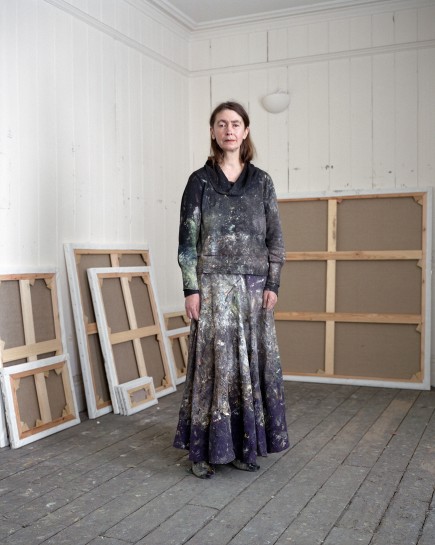Celia Paul interviewed by Jackie Wullschlager
The British painter Celia Paul talks to Jackie Wullschlager about women in art and the beauty of melancholy
In the doorway of Celia Paul’s mansion block, loud Bloomsbury crowds jostle for shelter from a summer shower. Within, at the top of a winding stone stairway, an Edwardian-looking figure with long face, pointed features, acute eyes and loose brown hair greets me warmly.
“It’s been leaking in rain,” apologises Paul, who speaks softly and moves with a gliding grace. She offers a smashed-up chaise longue and installs herself in a paint-encrusted chair; the only other furniture is a single iron bedstead. Peeling walls are empty save a charcoal portrait of Paul by her son Frank, covered in plastic. Paul offers tea, made from a kettle in the corner on bare floorboards.
Even on a dull day, light fills the dilapidated, damp interior; high windows look out through treetops on to the dome of the British Museum. Paul enjoys the studio’s “slightly Venetian quality of dissipation and grandeur”, as well as “the steady undisturbed quality” of the light. Here, in works combining Venetian allusion with cool northern tonality, she is making “lots of paintings of women alone in a room for ‘Desdemona’ ”. They go on display this month at Victoria Miro in Desdemona for Hilton by Celia, a title referencing Paul’s acclaimed show curated by critic Hilton Als at New York’s Metropolitan Opera during last winter’s production of Otello.
Along with self-portraits are seascapes; they share Paul’s measured scrutiny, sombre palette, and an understated register of deep feeling that places her in the lineage of reclusive artists of minimalist sensibility such as Gwen John and Agnes Martin.
